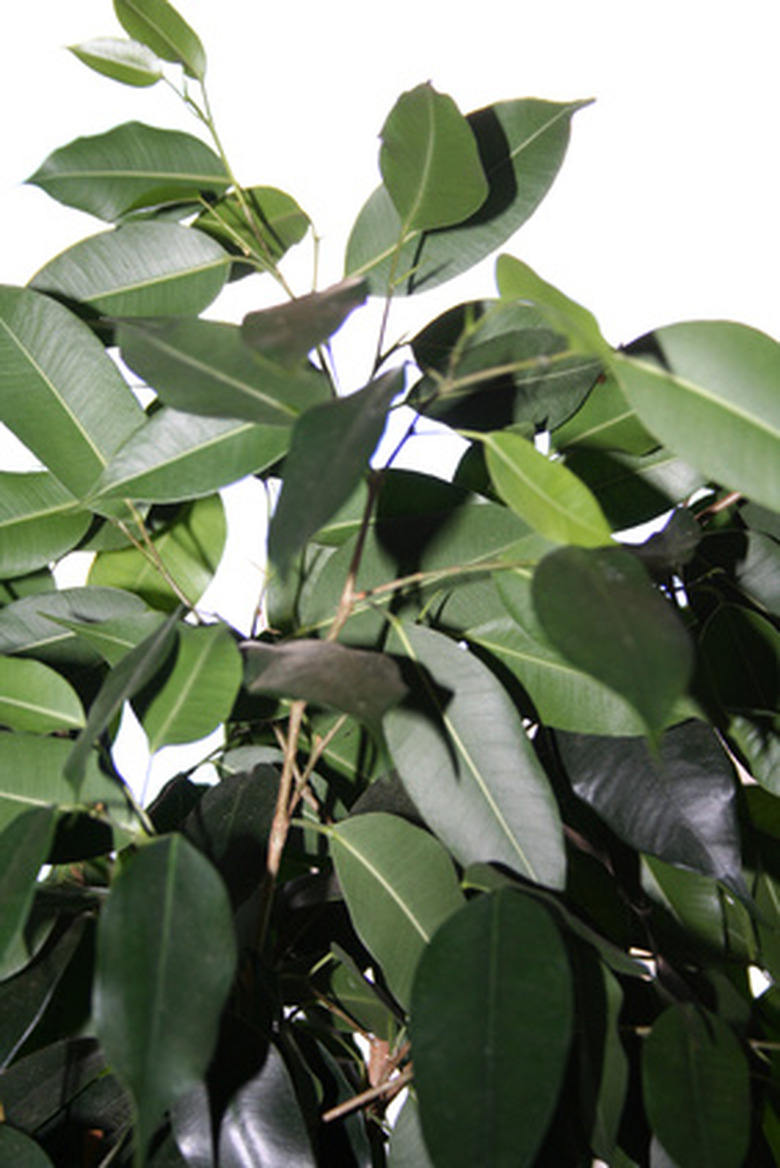Rubber Tree Diseases
Rubber tree plants (Ficus elastica) belong to the Ficus family, which is affected by a variety of diseases. From bacterial to cultural issues, identify the causes and symptoms to prevent or treat diseases on your rubber tree. Always keep your ficus vigorous through proper care to increase resistance to disease.
Anthracnose
Anthracnose is caused by the fungal pathogen Glomerella cingulata or Colletotrichum spp. on rubber tree plants. This disease causes areas that look like greasy spots on plant surfaces. The spotted plant tissue becomes yellow, dies and disintegrates, leaving a yellow-edged hole it its wake. Leaves may become diseased and drop prematurely from the plant. For control, choose a method other than overhead irrigation, as wet leaves provide a breeding ground for pathogens. Also, apply the fungicide mancozeb as a preventive measure to avoid anthracnose infection, advises the Pennsylvania State University Cooperative Extension.
- Rubber tree plants (Ficus elastica) belong to the Ficus family, which is affected by a variety of diseases.
- For control, choose a method other than overhead irrigation, as wet leaves provide a breeding ground for pathogens.
Cold Injury
Rubber tree plants suffer from disease when grown in improper climates. When temperatures drop below 40 degrees F, a rubber tree plant may display irregularly shaped brown spots on established leaf surfaces. Younger leaves may become malformed and turn from green to brown, according to the Pennsylvania State University Cooperative Extension. For control, if you are growing your rubber tree plant outdoors, bring it in during winter. For indoor plants, maintain indoor temperatures and keep your plant away from air-conditioning vents.
Foliar Nematode
Foliar nematode is a disease of rubber tree plants caused by microscopic worm-like creatures that feed on plants. This nematode (Aphelenchoides besseyi) causes rectangular spots on leaf surfaces, primarily on the lower section of the plant. Spots begin near the center vein of the leaf and spread outward, according to the University of Florida IFAS Extension. Spotted areas often yellow and die. Outdoors, nematodes move from weed hosts to rubber tree plants, so remove or mow weeds to prevent migration. For both indoor and outdoor plants, remove and destroy affected plant parts and choose another method other than overhead irrigation, advises the Pennsylvania State University Cooperative Extension.
- Rubber tree plants suffer from disease when grown in improper climates.
- When temperatures drop below 40 degrees F, a rubber tree plant may display irregularly shaped brown spots on established leaf surfaces.
